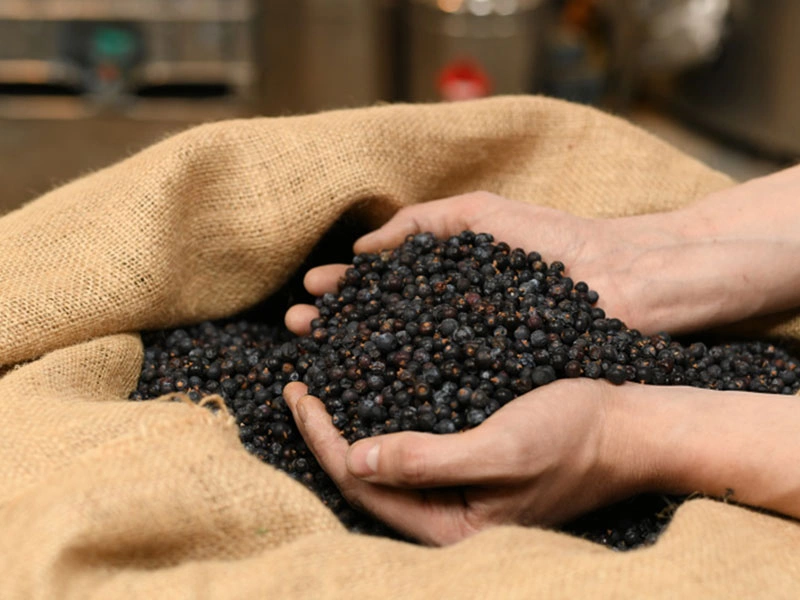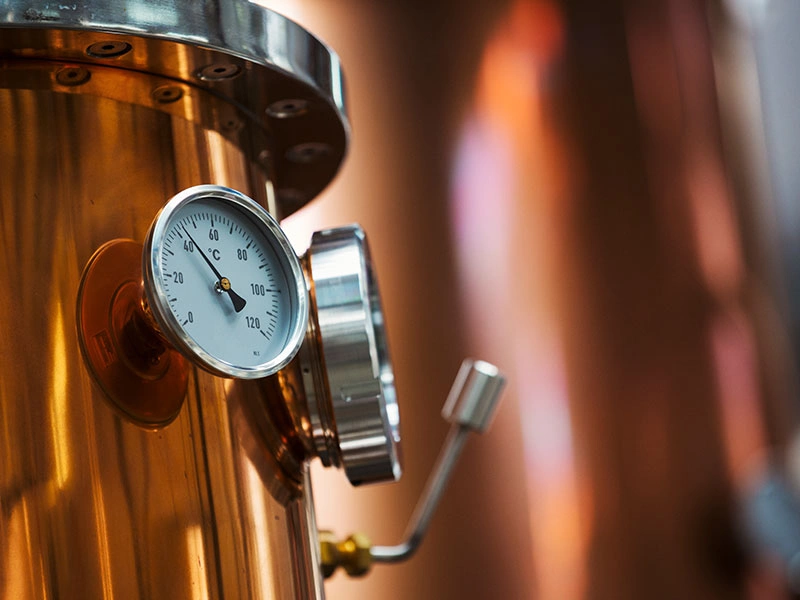Gin Production
Gin can be categorized as a spirit flavoured with Juniper, as well as botanicals including fruits, herbs, barks, berries and nuts.

Base Spirit
Distillers generally start the production process of their spirit with a purchased Highly Rectified Spirit (HRS). Producers will rarely make their own HRS, however they are incredibly picky as to which type they initially purchase. Certain HRS yield different characteristics and depending on which you choose, whether from grain, molasses or grape, will affect the final flavour to the spirit.
Botanicals
Juniper is always present. This addition now means your spirit is a ‘gin’. Juniper berries are actually not berries at all, Juniperus Communis is actually a pinecone that grows wild through the Northern hemisphere. It’s ‘fruits’ are notoriously slow to ripen with a juniper bush being unable to harvested for anywhere up to two years.
Once the producer has chosen the amount of juniper they wish to add to their gin, they will now work with the flavor profile of the rest of the products. Botanicals are added to the juniper and chosen to represent balance between the mix. Woody flavours are added to herbal ones, fruit characteristics will also add depth of flavour and cut through any bitterness or add aromatics.
Typical botanicals used besides Juniper are Angelica Root, Coriander, Chamomile, Liquorice Root and Citrus Peel.


Distillation
Gin is distilled in pot stills. Water is added to the HRS to bring the spirit down to roughly 60% ABV. At this stage the botanicals are added and the spirit is distilled once to a level of roughly 78-80% ABV. The botanicals and HRS can be mixed together in a number of ways, by either through a one shot or two shot method. A two-shot method will essentially add twice as many botanicals to the distillation to create a gin concentrate.
Besides merely adding your botanicals to the distillation, the producer may also create a gin using a carterhead method of distillation. Instead of directly adding botanicals to a still full of spirit, the botanicals are suspended above the spirits in a basket that then gives its flavour when the vapor from the spirit rises through the still and through the flavourful botanicals.
The ‘basket’ analogy to help understand this is through the humble cup of tea. If you were to put your tea leaves directly in boiling water, your tea would take on heavier, stronger tea characteristics. Conversely, if you were to suspend your tea leaves above rising hot water vapour, then catch that vapour and condense back into liquid, your tea would be more subtle, with lighter and more floral flavours coming through. This same logic applies to gin production.
Lastly, blending separately distilled botanicals has become increasingly popular with many more distillers taking more of a winemaker approach to the process by distilling each flavour separate and bringing those elements together to achieve balance after distillation.
After distillation, a gin is rarely aged in wood. Instead, demineralized water is added to the spirit to achieve the perfect balance of flavour and bottled at the desired strength.
Gin Timeline
Take a trip back in time, from 150 BC to modern day

